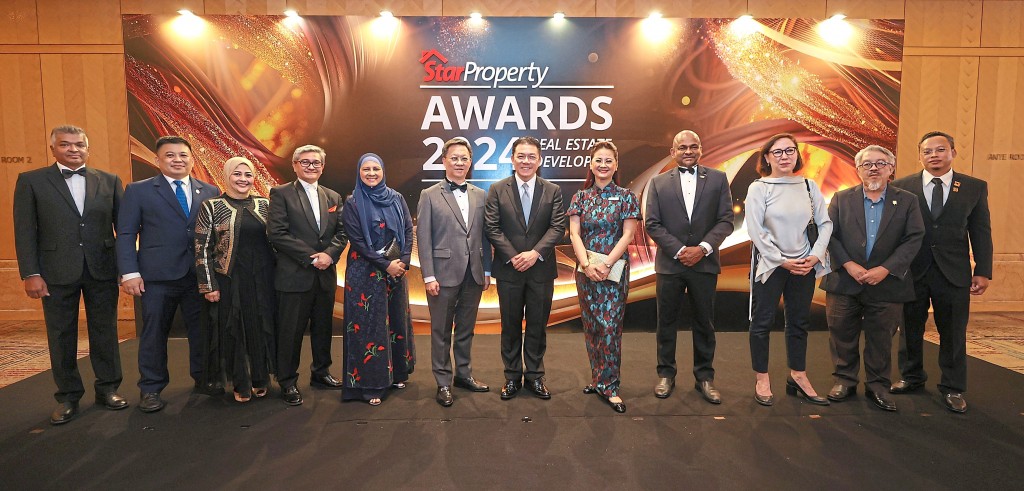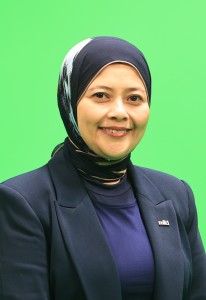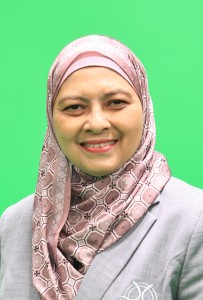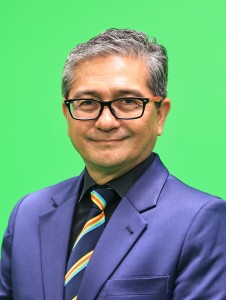Reach for the skies: Judges say

Taking a photo with Housing and Local Government Minister Nga Kor Ming (seventh from left) and Star Media Group chief executive officer Chan Seng Fatt (sixth from left), chief business officer Lydia Wang (fifth from right) and managing editor Brian Martin. The judges (from left) are Tan, Norshafina, Adzman, Noraida, Subramaniam, Serina, Abu Zarim and Khalifah.
Building a more competitive industry among sustainable and digital progress
Following another sensational year for the StarProperty Awards 2024 Real Estate Developers Edition, the judging panel was once again impressed by the strong performance and participation of the developers and their projects.
The panel comprises eight seasoned professionals from various unique sectors of the real estate industry. Drawing from a breadth of knowledge and decades of experience in their respective fields, the panel spans an extensive range of industries, including architecture, surveyor, interior design, sustainability and engineering.
Conducting a holistic examination of the property industry’s prime developments under the StarProperty banner, each judge provides a different set of perspectives and their own commitment to ensure stringent control in the judging process.
In line with its commitment towards diversity in action, the Awards has comprehensive judging criteria with integrated feedback from the prior year, placing particular emphasis on aspects of social and environmental sustainability. Its role in active improvement allows StarProperty to practise constant innovation of future panels and initiatives.
The judges include:
- Association of Valuers, Property Managers, Estate Agents, Property Consultants in the Private Sector president Subramaniam Arumugam
- Institution of Engineers Malaysia vice president Prof Tan Chee Fai
- Institute of Landscape Architects Malaysia vice president Khalifah Jamaluddin
- Malaysian Green Building Council president Dr Serina Hijjas
- Malaysian Institute of Architects president Abu Zarim Abu Bakar
- Malaysian Institute of Interior Designers deputy president Norshafina Ibrahim
- Malaysian Institute of Planners president Datin Noraida Saludin
- Royal Institution of Surveyors Malaysia president Adzman Shah Mohd Ariffin
Here’s what they had to say about the awards this year:
“I am greatly impressed by the general enthusiasm and interest shown by developers in participating in this programme. The competition to have their projects certified by StarProperty, an esteemed news agency in the country, speaks volumes about the recognition and prestige of these awards,” Subramaniam said.
The year’s entries address a wide range of issues in property development, spanning residential, commercial and industrial projects. He pointed out the notable focus on cutting-edge development technologies and compliance with international standards such as environmental, sustainable and governance (ESG) criteria.
Additionally, the entries highlight innovations in smart city and smart home technologies as well as high-tech managed industrial parks.
“We have certainly seen a growth in the number of entries from last year and the approach to the judging panels has changed to adapt to this surge of entries. This is probably one of the most anticipated property developers’ awards in the country, attributed to reaching more readers and potential purchasers per view,” Serina said.
“There is a noticeable increase in participation from smaller or non-GLC developers in the SPDA,” Noraida agreed. “This is a positive development as it signifies a broader range of developers contributing to quality projects, beyond just the major industry players.
“Secondly, the quality of submissions has significantly improved, particularly in terms of documentation, evidence and presentations. This enhancement makes the judging process more structured and effective. With the passing mark raised to 60%, the SPDA has become more competitive. This competitiveness drives high-quality submissions and arguments, thereby setting a high standard for the SPDA,” she added.
With the increased passing requirements, judges can now assess entries based on higher standards.
“As a result, the shortlisted entries are fewer but of better quality in each category, making the judging process faster and less strenuous. This ensures that only the best entries are evaluated during the judging session,” Noraida said.
Sustainability in vogue
Tan agreed that the calibre of innovation and commitment to sustainability in this year’s project designs was high, with entries that demonstrated sophisticated applications of green technologies and intelligent building methods, enhancing both functionality and aesthetics while prioritising environmental stewardship.
“I was immensely impressed by certain developments which had sustainable features and good facilities for multigenerational community occupants. The issues which appear to be tackled by the SPDA entries include ESG features, community-related attributes and smart development concepts,” Adzman said.
“I noticed that in addressing ESG, the entries have incorporated sustainable building materials and practices to minimise environmental impact. In their presentation, they also commit to promote community engagement and well-being by providing relevant facilities and planning social initiatives which can draw the future community in the development together and promote harmony,” he added.
He noted that the more established developers were more likely to have a track record in such initiatives based on the ability to obtain green and Qlassic certifications in previous developments.
In agreement, Khalidah noted that there have been a lot of impressive projects in the entries, especially PR1MA Seremban, which he felt was affordable to the middle-income public.
The developers should be encouraged to look further at new developments that are more towards sustainability to tackle issues like global warming and flood-resistant design, he added.
“Sustainable and smart developments are also now basic benchmarks for future developments which wish to be more marketable. I believe these developers are on the right track as they appear to have found a formula to make the projects saleable and profitable by adopting such features,” Adzman said.
“To elevate projects in Malaysia, there must be stringent criteria and benchmarks that emphasise environmental concerns, sustainability features and ethical governance,” he added.
As a judge representing green buildings in Malaysia, Serina conceded that there has been a steady rise of green residential developments reaching the market, with some focusing on well-being facilities for homeowners.
“As an architect and a sustainable advocate, my judging looks for the social and environmental sustainable qualities in the developments that make a concerted effort in these areas. Of course, I am advocating for all entries to qualify to be green by design, as I see this as business as usual and not a special offering,” Serina said.
“I look forward to Malaysian properties choosing to be green for ourselves, for our people, as much as it should be for the planet. We would then stand apart in Asian property as it becomes our green pride,” she added.
Incoming digital wave
Tan pointed to the dedication some developers had to incorporate digital tools in property development and management, which he saw as a progressive step within the industry.
With urban densities on the rise, prioritising vertical green spaces and sustainable urban designs will be crucial in enhancing the quality of city life. Despite the focus on sustainable construction and green building, Tan noted that developers had yet to centre on sustainable and efficient energy usage.
“There is a concerted effort to improve community living through strategic urban planning and amenities designed to foster social interactions and accessibility,” Tan said.
“It is heartening to observe the industry’s vigorous efforts in advancing sustainability and technological integration. Yet, it is essential for developers to also consider the broader socio-economic ramifications of their projects, including housing affordability and inclusivity,” he added.
In accordance with the government’s push for digitalisation, Tan anticipated a more pronounced focus on melding sustainability with technological innovation in real estate development. The evolution would leverage big data to gain deeper insights into buyer preferences and market dynamics and integrate Internet of Things solutions to optimise building operations and enrich residential experiences.
“Moving forward, maintaining a balance between innovation and social responsibility will be fundamental to achieving sustainable growth and development in the real estate sector. I look forward to seeing how these insights and developments influence future projects and the overall direction of the real estate industry,” Tan said.
StarProperty Development Award participating developments must have obtained building plan approval and an Advertising Permit and Developer’s License (APDL). Developments are required to have a checklist and complete a marking matrix, from which the panel would award points. The developers must also be aware of the categories and must be filtered from the start to ensure they qualify to be considered, for example, those in the transit-oriented development (TOD) category projects must fulfil TOD criteria under the planning provision.
“This year’s entries have been particularly interesting. Despite the challenges posed by the post-Covid environment, the property sector clearly continues to thrive, showcasing a diverse array of offerings,” Norshafina said.
“I’m impressed by the range of projects this year, from affordable housing to luxury residences and commercial developments, each responding innovatively to the challenges of the pandemic. Many developments have added significant value by enhancing lifestyle quality in both residential and commercial spaces,” she added.
Norshafina noted that this adaptability not only showcases the resilience of the industry but also underscores its commitment to improving the well-being of its clientele. Efforts towards universal design, multigenerational living and sustainability within each entry were also commendable.
Having spent her career focusing on the beauty of spaces and how they function, her experience as an interior designer deeply influenced her approach to the judging process.
“This perspective makes me particularly sensitive to how effectively each entry integrates aesthetics with practicality. I look for thoughtful material choices, clever use of space and innovative design elements that elevate everyday living,” she pointed out.
“Being immersed in design trends and understanding evolving lifestyle needs helps me discern which properties are truly ahead of their time in meeting consumer desires. This background allows me to appreciate properties that not only look stunning but are also intuitively designed to enhance comfort and usability,” she added.
Noraida pointed out that alongside an increased focus on emphasising environmentally friendly and sustainable practices in construction and development, there was also an increase in the availability of affordable housing options for a broader segment of the population.
As the awards continue to raise the bar on quality standards and ensure stringent adherence to building regulations and guidelines, developments could also enhance urban planning to create more liveable cities with better infrastructure.
This could come in the form of incorporating soft landscape, such as the concept of sponge cities, more pedestrian, cycling and micro-mobility facilities, and more integrated public amenities.
While there were quite several well-planned developments put forward in the entries, Adzman noted that there were a couple of development projects which did not meet the required criteria.
Khalifah expected that in future award shows, there would be an opportunity for the panel to review and discuss the criteria before pursuing the judging session.
“I hope the organiser will reconsider some of the judging criteria to provide better clarity and differentiation between categories, ensuring that entry submissions align well with their respective categories. Organising a meeting with the judges to review the criteria could be beneficial,” Noraida agreed.
“Looking forward, I hope the real estate industry will continue to expand into areas of modern living and innovative concepts. A greater emphasis on environmentally friendly and sustainable practices would be beneficial. This includes adopting more green building practices and developing projects that contribute to a sustainable living environment,” Subramaniam said.

Despite the challenges posed by the post-Covid environment, the property sector clearly continues to thrive, Norshafina said.

(“There is a noticeable increase in participation from smaller or non-GLC developers in the SPDA,” Noraida said.

Sustainable and smart developments are also now basic benchmarks for future developments, Adzman said.
Source: StarProperty.my




















POST YOUR COMMENTS